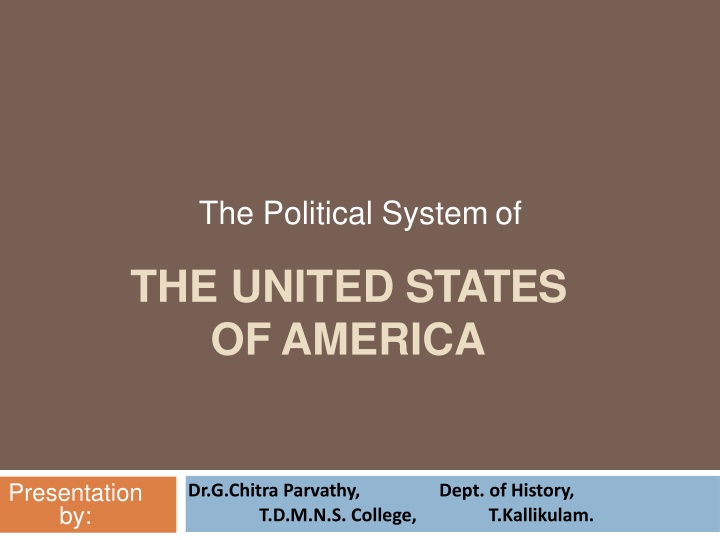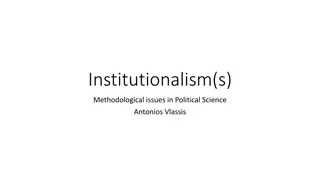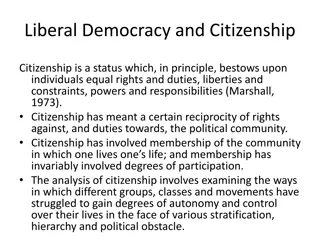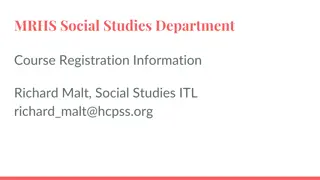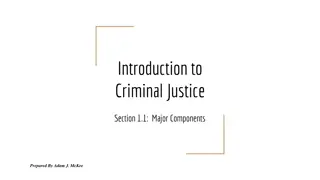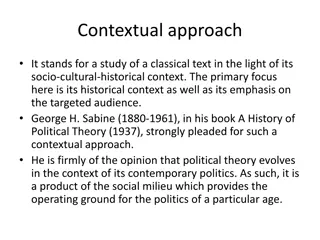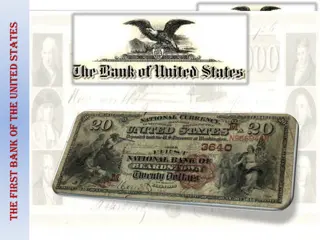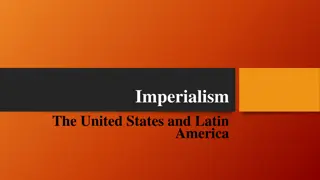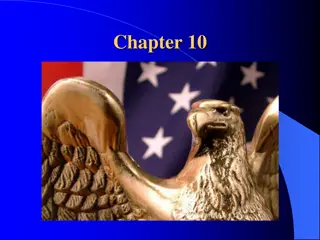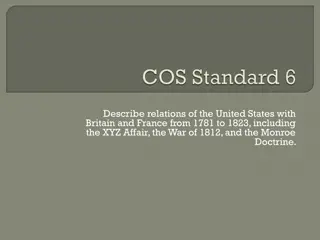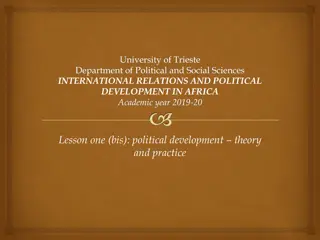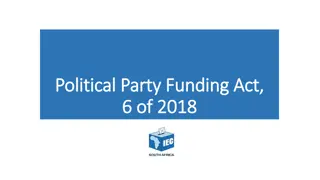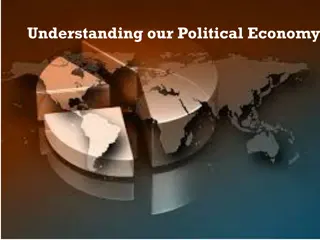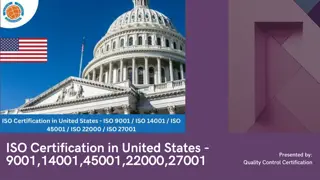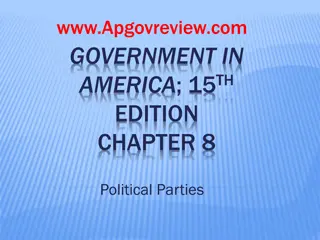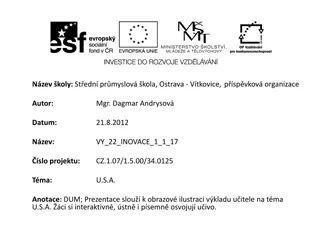The Political System of the United States of America
The presentation by Dr. G. Chitra Parvathy explores the political system of the United States, highlighting its historical development as the oldest continuous democracy. The division of powers into the legislative, executive, and judicial branches, along with the roles of the President, Senate, House of Representatives, and the judiciary are discussed. The system's constitution and separation of powers, major political parties, and electoral dynamics between Democrats and Republicans are also analyzed.
Download Presentation

Please find below an Image/Link to download the presentation.
The content on the website is provided AS IS for your information and personal use only. It may not be sold, licensed, or shared on other websites without obtaining consent from the author.If you encounter any issues during the download, it is possible that the publisher has removed the file from their server.
You are allowed to download the files provided on this website for personal or commercial use, subject to the condition that they are used lawfully. All files are the property of their respective owners.
The content on the website is provided AS IS for your information and personal use only. It may not be sold, licensed, or shared on other websites without obtaining consent from the author.
E N D
Presentation Transcript
The Political System of THE UNITED STATES OF AMERICA Presentation by: Dr.G.Chitra Parvathy, T.D.M.N.S. College, Dept. of History, T.Kallikulam.
Introduction: The US is the oldest continuous democracy in the world. It was established in 1789, although not all features of the system were as democratic as they are now.
Organiasation of Command: The constitution has divided the powers of government intothree branches, Legislative,Executive and Judiciary, lodging each with a distinct magistracy. The Legislative it has given completely to the Senate and House of Representatives. It has declared that the Executive powers shall be vested in the President, submitting special articles of it to a negative by the Senate, and it has vested the Judiciary power in the courts of justice, with certain exceptions also in favor of the Senate. Judiciary Executive Legislature ~Thomas Jefferson: Opinion on Executive Appointments, 1790. ME 3:15
Executive Arm: Head of State Commander-in-Chief Elected by electoralcollege First in succession line to President in case of death, resignation or removal President of the Senate Members nominatedby President, confirmed by Senate Head 15 majorfederal departments President Vice President Cabinet Federal Departments & Agencies 60+ departments and agencies in total Responsible for day-to-day enforcement & administration of federallaws
Legislative Arm: Congress House of Representatives Senate
Major Political Parties in the USA Democratic Republic
How are Democrats and Republicans spread across America? Voted Republican all 4 past elections Last four US elections: Voted Republican in 3 out of the past 4 elections Twice Voted Republican, Twice Democrat Voted Democrat 3 out of 4 past elections Voted Democrat in all four past elections
Voting and the electoral process Who can vote? How many types of elections are held and when? 1. Presidential Elections 2. House of Rep. Elections 3. Senate Elections 4. Gubernatorial Elections 5. Primary Elections Voter turnout Campaigning
Political Culture of the USA We hold these truths to be self-evident, that all men are created equal, that they are endowed by their Creator with certain unalienable Rights, that among these are Life, Liberty and the pursuit of Happiness. That to secure these rights, Governments are instituted among Men, der~ivUinni t egd Sttha tee sirD ejuc l asr att i o n of powers fromI n dtehpee n dceon cnes, Jeu lnyt4,o17f76 the governed...
Religion Very powerful agent of socialization Catholics : Liberal economics/social conservatives Protestant: Conservative economics & social issues Jewish: Liberal economics & social issues
